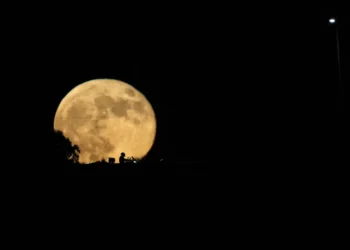The Spring Equinox is Here: What It Means and Why It Matters
Spring has officially arrived—at least according to the calendar. The vernal equinox takes place on Thursday, marking the beginning of spring in the Northern Hemisphere and autumn in the Southern Hemisphere. This celestial event is unique, as it is one of only two times each year when both the North and South Poles are illuminated by the sun simultaneously.
A Global Celebration of the Equinox
The equinox has been observed and celebrated by cultures worldwide for centuries. For instance:
- Nowruz, the Iranian New Year, is based on the timing of the spring equinox and symbolizes renewal and rebirth.
- At Chichen Itza, an ancient Mayan site in Mexico, crowds gather to witness a fascinating natural spectacle. During the equinox, sunlight creates a shadow that resembles a serpent slithering down the steps of El Castillo, a famous pyramid.
What is the Equinox?
The Earth’s orbit around the sun is not perfectly upright; instead, it travels at a tilt. For most of the year, this tilt causes sunlight to be distributed unevenly between the Northern and Southern Hemispheres. However, during an equinox, the Earth’s axis aligns in such a way that both hemispheres receive nearly equal amounts of daylight.
The term “equinox” originates from the Latin words aequus (equal) and nox (night), referring to the near-equal length of day and night on this day. However, some locations may experience a few extra minutes of daylight due to atmospheric refraction and the way sunrise and sunset are defined.
The Northern Hemisphere’s spring equinox can occur between March 19 and 21, while the autumnal equinox falls between September 21 and 24.
Understanding the Solstice
While equinoxes mark the points when day and night are nearly equal, solstices represent the extremes of daylight and darkness.
- The summer solstice occurs when one hemisphere is tilted maximally toward the sun, resulting in the longest day of the year. In the Northern Hemisphere, this happens between June 20 and 22.
- The winter solstice is the opposite, marking the shortest day and longest night of the year, occurring between December 20 and 23 in the Northern Hemisphere.
Meteorological vs. Astronomical Seasons
There are two ways to define the seasons: astronomical and meteorological.
- Astronomical seasons are based on Earth’s orbit around the sun and include equinoxes and solstices as seasonal markers.
- Meteorological seasons, on the other hand, are based on annual temperature patterns and divide the year into four three-month periods:
- Spring: March 1 – May 31
- Summer: June 1 – August 31
- Fall: September 1 – November 30
- Winter: December 1 – February 28 (or 29 in leap years)
While astronomers use celestial movements to define seasons, meteorologists rely on consistent weather patterns to aid forecasting and climate analysis.
Final Thoughts
The vernal equinox is more than just a marker on the calendar—it’s a moment of balance in the natural world, celebrated by cultures across history. Whether you recognize it through ancient traditions, scientific curiosity, or simply the joy of warmer days ahead, the arrival of spring is a reminder of the planet’s intricate dance around the sun.
This article was rewritten by JournosNews.com based on verified reporting from trusted sources. The content has been independently reviewed, fact-checked, and edited for accuracy, neutrality, tone, and global readability in accordance with Google News and AdSense standards.
All opinions, quotes, or statements from contributors, experts, or sourced organizations do not necessarily reflect the views of JournosNews.com. JournosNews.com maintains full editorial independence from any external funders, sponsors, or organizations.
Stay informed with JournosNews.com — your trusted source for verified global reporting and in-depth analysis. Follow us on Google News, BlueSky, and X for real-time updates.














